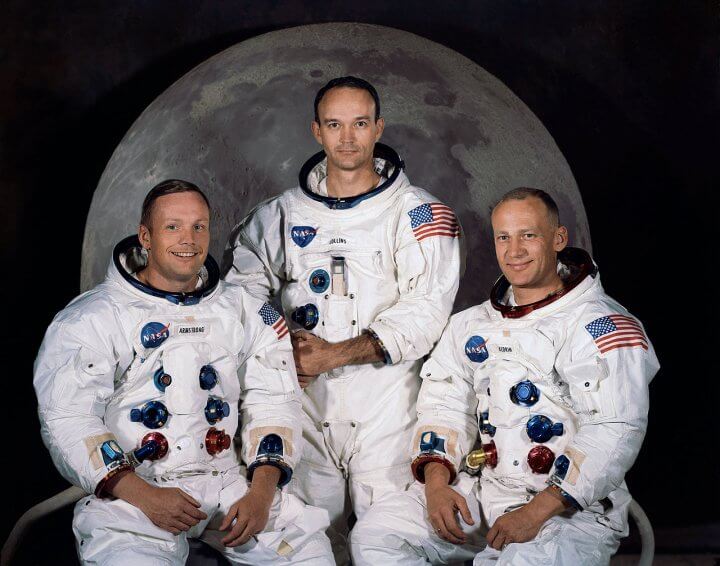
The Apollo 11 was the first manned mission that successfully landed on the moon. Manned by three American astronauts, Apollo’s Lunar module, the Eagle, landed on the face of the moon on July 20, 1969. The first man to ever step foot on the moon did so six hours after landing. Below you will find more of a brief history of the crew and mission of Apollo 11.
The Crew:
* Commander — Neil Armstrong
* Command Module Pilot — Michael Collins
* Lunar Module Pilot — Edwin “Buzz” Aldrin
All three of these crew members had been on two space missions previously.
There was also a back-up crew, and countless people on the ground at NASA’s Mission Control. Obviously, without the help of both those in the sky and on the ground the landing on the moon would not have been possible.
Mission History:
July 16, 1969 — Apollo 11 was launched from Kennedy Space Center (9:32AM local time). An estimated audience of over 700 million people viewed the event on television while over a million people were present at the actual launch site. 12 minutes later Apollo 11 entered the earth’s orbit.
July 19, 1969 — Apollo 11 entered the lunar orbit and prepared for their landing site on what they called the “Sea of Tranquility.” This spot was selected over other landing spots because surveyors had determined that the area was relatively flat and smooth.
July 20, 1969 — Eagle (the lunar module) separated from the Command Module and began to descend towards the surface of the moon. After having to make some quick last minute landing decisions based on incorrect computer information, the Eagle was manually landed by Neil Armstrong with the guidance of NASA’s Mission Control Center. This landing was a close-call as it is said that there were only 30 seconds of fuel remaining on the lunar module (engineers had not considered that lunar gravity would affect the fuel warning devices and subsequently added extra tanks in future flights). The place of landing was called Tranquility Base.
Armstrong’s first words after landing were: “Houston, Tranquility Base here. The Eagle has landed.” Aldrin added his comments to Armstrong’s by saying, “This is the LM pilot. I’d like to take this opportunity to ask every person listening in, whoever and wherever they may be, to pause for a moment and contemplate the events of the past few hours and to give thanks in his or her own way.”
July 20, 1969 (4:17 PM Eastern Daylight time) — Six and a half hours after landing, Armstrong stepped on the surface of the moon and spoke his famous words, “That’s one small step for (a) man, one giant leap for mankind.” For the next two and a half hours notes and photos were taken and core samples were drilled.
It has long been assumed that Armstrong mistakenly omitted the word “a” from his famous remark. After many years of debate, findings were conclusive in September of 2006. These findings claim to confirm Armstrong did say “a”.
Outside of war, the New York Times coverage of the Apollo 11 moon mission and subsequent landing was possibly the only event of the 20th Century to make front-page headlines simultaneously in every newspaper around the world.
July 24, 1969 — The astronauts returned to earth. They “splashed down” in the waters just east of the Wake Islands. They were recovered by helicopter an hour after landing. Due to the uncertainty as to whether or not the moon contained toxins that scientists were unaware of, the astronauts were quarantined until it was certain that they were free from any unknown contaminants. The President of the United States at the time, President Nixon, was aboard the recovery vessel to personally welcome home and congratulate the astronauts.